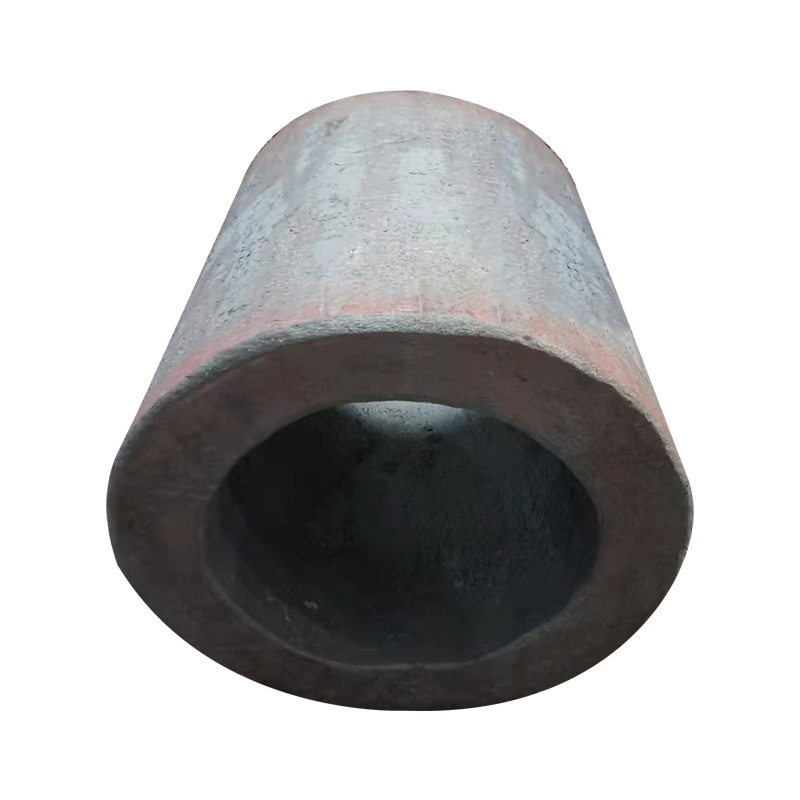How to produce gear forgings?
2022-07-27
Gear forging is a mechanical workpiece with teeth on the rim that can continuously mesh to transfer motion and power. The application of gear forgings in transmission appeared very early. With the development and progress of industry, the principle and use of the tooth method, the special machine tools and cutting tools have appeared, with the development of production, the quality of gear operation is paid attention to. Here's how gear forgings are produced.
First, gear forging
After signing the contract with the customer, the forging factory can cut the metal raw materials into reasonable billets after issuing the material report sheet according to the material requirements, dimensions and specifications of the drawings. The billet is put into the hot furnace, and the billet is heated and burned red. After heating, the shape of the billet can be improved. The forging process is carried out in the forging workshop. The forging worker controls the manipulator and the forging hammer or press to forge the heated blank into a reasonable size. The forging blank should have processing allowance. Then is the forging blank cooling, cooling methods have many kinds, furnace cooling, air cooling, cold resistance, etc. Adopt suitable cooling method according to material and requirement.
Two, gear processing
After the gear blanks are cooled well, the forging blanks can enter the processing workshop. There are many kinds of gear forging processing technology, according to the drawing of the gear tooth shape, different selection of processing methods are different, common hobbing, Sassafras teeth, shaving teeth, grinding teeth and other processing methods. The gear tooth profile is directly processed by the tool with the same shape of the gear tooth groove. When the disc milling cutter is machining the gear, the milling cutter will rotate its axis, and the wheel billet will move along its axis. After milling a groove, the wheel billet will return to its original place, and the gear billet will turn 360°/z with the dividing head. The second groove is milled in the same way. Repeat until all gears are milled out. Then heat treatment is carried out after shaving, which can improve the hardness and mechanical properties of gear forgings. And then grinding teeth. Make the product size precision, finish and so on completely conform to the forging drawing requirements.
Three, gear detection
Conduct comprehensive inspection on the processed gear forgings, and the product appearance inspection conforms to the size specified in the customer drawings. Carry out ultrasonic flaw detection (UT), magnetic particle flaw detection (MT), hardness, carburizing and other drawings. In order to meet customer requirements, it is necessary to test the mechanical properties of gear forgings, mainly including yield, tensile, impact and metallographic tests. After quality inspection, the finished forgings are processed with anti-rust paint and put into the finished goods warehouse for delivery.
First, gear forging
After signing the contract with the customer, the forging factory can cut the metal raw materials into reasonable billets after issuing the material report sheet according to the material requirements, dimensions and specifications of the drawings. The billet is put into the hot furnace, and the billet is heated and burned red. After heating, the shape of the billet can be improved. The forging process is carried out in the forging workshop. The forging worker controls the manipulator and the forging hammer or press to forge the heated blank into a reasonable size. The forging blank should have processing allowance. Then is the forging blank cooling, cooling methods have many kinds, furnace cooling, air cooling, cold resistance, etc. Adopt suitable cooling method according to material and requirement.
Two, gear processing
After the gear blanks are cooled well, the forging blanks can enter the processing workshop. There are many kinds of gear forging processing technology, according to the drawing of the gear tooth shape, different selection of processing methods are different, common hobbing, Sassafras teeth, shaving teeth, grinding teeth and other processing methods. The gear tooth profile is directly processed by the tool with the same shape of the gear tooth groove. When the disc milling cutter is machining the gear, the milling cutter will rotate its axis, and the wheel billet will move along its axis. After milling a groove, the wheel billet will return to its original place, and the gear billet will turn 360°/z with the dividing head. The second groove is milled in the same way. Repeat until all gears are milled out. Then heat treatment is carried out after shaving, which can improve the hardness and mechanical properties of gear forgings. And then grinding teeth. Make the product size precision, finish and so on completely conform to the forging drawing requirements.
Three, gear detection
Conduct comprehensive inspection on the processed gear forgings, and the product appearance inspection conforms to the size specified in the customer drawings. Carry out ultrasonic flaw detection (UT), magnetic particle flaw detection (MT), hardness, carburizing and other drawings. In order to meet customer requirements, it is necessary to test the mechanical properties of gear forgings, mainly including yield, tensile, impact and metallographic tests. After quality inspection, the finished forgings are processed with anti-rust paint and put into the finished goods warehouse for delivery.
Due to the wide application of gear forging, and the increasing number of high-speed, high-performance gear requirements, so the grinding machining is required to improve the efficiency and quality.

X
We use cookies to offer you a better browsing experience, analyze site traffic and personalize content. By using this site, you agree to our use of cookies.
Privacy Policy



